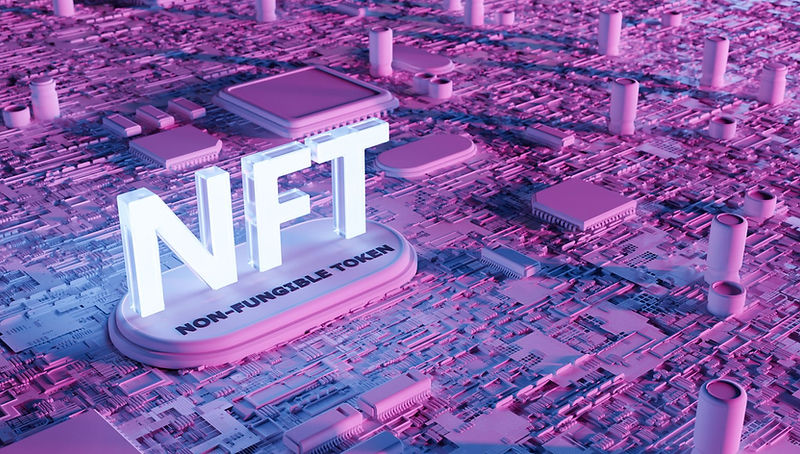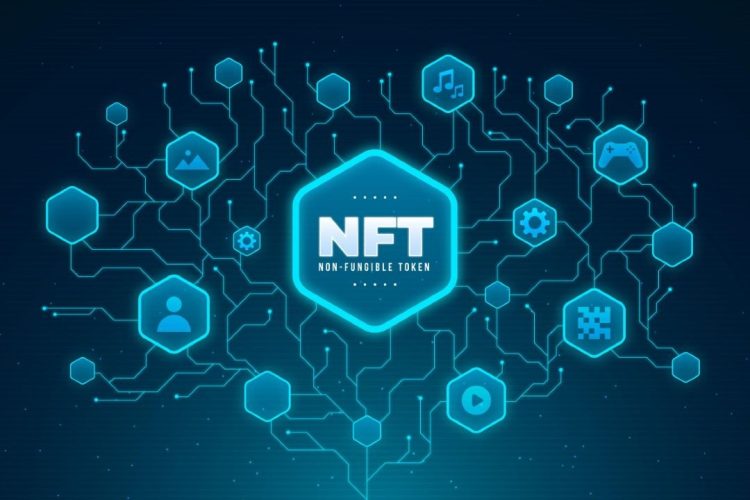Introduction
In the past few years, Non-Fungible Tokens (NFTs) have emerged as a groundbreaking technology, causing a paradigm shift in various sectors, especially in digital entertainment and online assets. Originally seen as niche and speculative digital items, NFTs have gained global attention, skyrocketing in value and popularity. The dramatic growth of the NFT market is a direct result of a significant increase in people’s focus on digital entertainment, virtual ownership, and online assets.
NFTs have unlocked entirely new possibilities for artists, content creators, collectors, gamers, investors, and consumers alike, providing them with a means to engage with digital goods, secure provenance, and prove ownership in a decentralized environment. As NFTs continue to revolutionize how we perceive and interact with digital content, it’s important to understand the factors driving this explosive growth, the key industries being impacted, and what the future holds for this innovative technology.
In this article, we will explore the causes of the rapid growth of the NFT market, its applications across various sectors, and its impact on the digital economy. We will also discuss the challenges and opportunities presented by NFTs in shaping the future of online assets and digital entertainment.
1. What Are NFTs?
Before diving into the reasons behind their explosive growth, let’s briefly define NFTs and how they differ from other types of digital assets.
1.1 Definition of NFTs
A Non-Fungible Token (NFT) is a unique digital asset stored on a blockchain, representing ownership or proof of authenticity of a specific item or piece of content. Unlike cryptocurrencies such as Bitcoin or Ethereum, which are interchangeable (fungible), NFTs are non-interchangeable and represent something that cannot be replaced by another identical item.
NFTs are primarily built on Ethereum (using standards like ERC-721 or ERC-1155), but other blockchain platforms like Binance Smart Chain, Flow, and Tezos have also introduced NFT support. The uniqueness of NFTs is achieved by using cryptographic signatures and metadata, making each token one-of-a-kind.
1.2 Key Characteristics of NFTs
- Uniqueness: Each NFT has a unique identity or metadata that differentiates it from other tokens.
- Indivisibility: NFTs cannot be divided into smaller units. They are bought and sold in whole units.
- Ownership and Provenance: NFTs provide proof of ownership and a transparent transaction history, ensuring their authenticity.
- Interoperability: NFTs can be transferred across different platforms and ecosystems, provided the platforms support the same standards.
2. Factors Behind the Explosive Growth of the NFT Market
2.1 The Rise of Digital Entertainment and Online Assets
The global digital entertainment industry has been expanding rapidly, with people increasingly spending more time on digital platforms for gaming, streaming, virtual events, and socializing. As this digital lifestyle grew, so did the demand for digital ownership and unique virtual items. NFTs offer a way to own a unique digital item, such as a piece of digital art, an in-game asset, or a collectible, in a way that was previously impossible.
The Pandemic Effect
The COVID-19 pandemic further accelerated the adoption of digital platforms. Lockdowns and restrictions pushed people to seek new forms of entertainment and ways to interact online. As a result, the demand for digital assets, virtual real estate, and online collectibles surged, driving the growth of the NFT market.
2.2 Empowering Content Creators and Artists
For years, artists and content creators have struggled with monetizing digital works, often losing control of their intellectual property (IP). NFTs provide a solution by allowing creators to tokenize their work, retain ownership, and sell it directly to buyers in a secure and transparent manner.
NFTs enable creators to embed smart contracts that automatically pay royalties every time their work is resold. This opens up new revenue streams, ensuring that creators are fairly compensated whenever their work is used or traded.
Example: Beeple’s Sale
A landmark moment in the NFT space was the sale of Beeple’s digital artwork, Everydays: The First 5000 Days, at $69 million at Christie’s auction house in March 2021. Beeple’s sale helped cement NFTs as a legitimate form of art, attracting widespread attention and sparking a new era of NFT adoption across the artistic community.
2.3 NFTs as Investment Opportunities
The increasing interest in NFTs also stems from the financial potential they offer. NFTs have become a new asset class, with investors looking at them as long-term collectibles, akin to traditional art, vintage items, or rare sports memorabilia. The appeal lies in the potential for appreciation in value, as buyers seek rare, limited-edition items with the hope that their scarcity and uniqueness will drive demand in the future.
NFTs and Speculation
Just like traditional collectibles, such as baseball cards or rare wines, NFTs have become the subject of speculative investment. The market for NFTs has attracted not just individual collectors, but also institutional investors, venture capitalists, and hedge funds, looking for profitable opportunities in the growing digital asset market.

3. Key Industries Affected by NFTs
3.1 Digital Art
NFTs have brought digital art into the mainstream. Traditionally, digital art was hard to monetize because it could easily be copied and shared without limitations. With NFTs, digital artists now have a mechanism to prove ownership and retain control over their works.
NFT platforms such as OpenSea, Rarible, and SuperRare have become popular marketplaces where artists can mint (create) NFTs and auction them to a global audience. NFTs not only provide a direct link between artists and buyers but also allow for programmable royalties—ensuring that creators receive a percentage of future sales of their work.
The Appeal to Art Collectors
Art collectors, who previously focused on physical artwork, are now increasingly shifting their attention to digital art. The NFT market allows them to purchase unique works that cannot be replicated, providing a new form of exclusivity.
3.2 Gaming
NFTs are revolutionizing the gaming industry by enabling players to truly own in-game assets. Items such as skins, characters, and virtual land can now be bought, sold, or traded as NFTs, allowing gamers to invest in their virtual worlds.
The game Axie Infinity, which allows players to buy and battle creatures called “Axies,” is one of the most successful examples of NFT integration in gaming. Players not only enjoy the game, but also have the potential to earn revenue through trading in-game assets on the marketplace.
Play-to-Earn Economy
NFT-based games are ushering in the play-to-earn model, where players can earn actual money through their in-game achievements. This concept has caught on particularly in developing countries, where players can earn enough to make a living by trading NFT assets from games like Axie Infinity or Decentraland.
3.3 Virtual Real Estate
In the virtual world, NFTs represent ownership of digital real estate, such as parcels of land in virtual worlds like Decentraland, The Sandbox, and Somnium Space. These virtual environments allow users to buy, sell, and develop properties, offering a new way to invest in real estate in the metaverse.
The Metaverse as a New Frontier
Virtual real estate has become an exciting new frontier for both investors and gamers. High-profile sales of virtual land in platforms like Decentraland have caught the attention of major companies and celebrities. As the concept of the metaverse grows, NFTs will play a crucial role in shaping this digital universe.
3.4 Fashion and Wearables
Fashion brands have begun experimenting with NFTs, offering virtual fashion items that users can purchase and wear in online games and social platforms. Companies like Gucci, Dolce & Gabbana, and Nike are releasing limited-edition virtual items as NFTs, tapping into the growing demand for digital goods and fashion.
NFT wearables can also be used in avatars within virtual worlds and metaverses, providing individuals with a way to personalize their online identities. The concept of digital fashion is set to grow, with NFT creators and designers leading the charge.
4. The Challenges and Risks of the NFT Market
4.1 Environmental Concerns
One of the most significant criticisms of NFTs is their environmental impact. The majority of NFTs are minted on Ethereum, which uses a Proof of Work (PoW) consensus mechanism. This process requires significant energy consumption, leading to concerns about the ecological footprint of the NFT market.
However, Ethereum’s upcoming transition to Proof of Stake (PoS) through Ethereum 2.0 is expected to drastically reduce energy consumption, making NFT transactions more sustainable in the future.
4.2 Market Volatility and Speculation
The NFT market is highly volatile, with prices fluctuating dramatically. While some NFTs have sold for millions of dollars, others have failed to gain traction, leaving investors with losses. This speculative nature can lead to significant risks for those entering the market without understanding its dynamics.
4.3 Legal and Regulatory Issues
As the NFT market grows, it faces growing legal and regulatory scrutiny. Questions regarding intellectual property rights, the ownership of digital content, and the legality of NFT transactions are still evolving. Governments and regulators are beginning to examine NFTs more closely, and clear legal frameworks will be necessary to ensure fair practices within the market.
5. The Future of NFTs and Digital Assets
5.1 The Rise of the Metaverse
As the metaverse continues to grow, NFTs will play
a central role in creating a fully decentralized digital economy. NFTs will represent everything from virtual real estate to digital goods, fashion, art, and experiences, driving the next phase of virtual and augmented reality.
5.2 Broader Adoption in Traditional Industries
In the coming years, NFTs are likely to see broader adoption in traditional industries such as real estate, finance, and healthcare. By using NFTs for asset tokenization and verification, businesses can streamline their operations, reduce fraud, and offer new products and services to customers.
Conclusion
The explosive growth of the NFT market is a direct reflection of the growing demand for digital entertainment, virtual ownership, and online assets. NFTs have revolutionized the way we interact with digital content, offering new opportunities for creators, collectors, investors, and consumers. As the market continues to evolve, we can expect further innovation in the applications of NFTs, along with ongoing challenges in regulation, environmental impact, and market volatility.
The future of NFTs is bright, with limitless possibilities for digital transformation across industries, but it will require careful navigation and responsible development to fully realize their potential.

















































